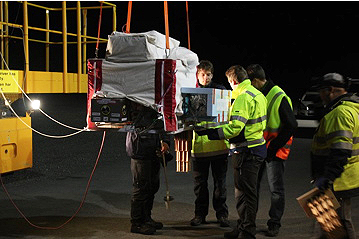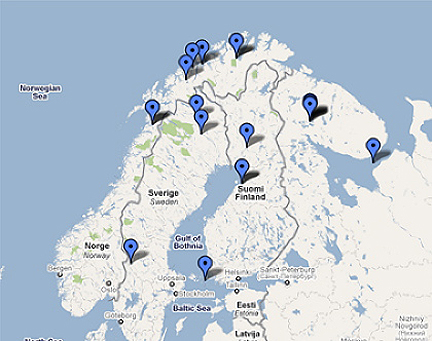International Space University... Air Traffic Management Via Balloon (Project)
[SatNews] An experiment, designed, built, and tested by a team of three students at the International Space University (ISU) successfully launched on-board a stratospheric balloon from Esrange Space Center in the Swedish Arctic.
 The I-BATE experiment was launched onboard the BEXUS 10 stratospheric balloon.
The I-BATE experiment was launched onboard the BEXUS 10 stratospheric balloon.
The experiment, called
I-BATE (
ISU-Balloon Air Traffic control Experiment), relayed aircraft transponder signals back to the students monitoring on the ground in hopes of advancing the current state-of-the-art of air-traffic management. A receiver donated by
Kinetic Avionics, I-BATE’s prime sponsor, captured the aircraft signals. The signals were then processed by a microcomputer and then relayed to the students on the ground in real-time. The students,
Tom Nordheim (Norway),
Richard Rieber (USA), and
Yuval Brodsky (Canada/Israel), spent more than a week at
Esrange preparing the experiment and waiting for weather to cooperate for the launch. The balloon was inflated and cut free from its moorings at 03:00 CET (01:00 UTC) on Saturday 9 October 2010 and rapidly ascended to its 26km floating altitude, almost three-times higher than the altitude of commercial aircraft. From this vantage point, I-BATE observed 15-aircraft flying within Norway, Sweden, Finland, and Russia over the duration of the 5-hour flight. I-BATE tracked 6-flights simultaneously with a maximum range of 850km.
 Map of Northern Europe showing flights tracked by I-BATE.
Map of Northern Europe showing flights tracked by I-BATE.
The work of the I-BATE team and the results of this balloon-flight may pave the way for a constellation of networked, low-earth orbiting satellites that could provide airlines, governments, airports, and air traffic controllers a real-time global picture of all aircraft in flight on the Earth. I-BATE was one of several experiments that launched on the
BEXUS-provided balloon. The other experiments were
CASS-E, from
Cranfield University in the UK and
SCRAT, from the
University of Padova in Italy. The
BEXUS program (
Balloon EXperiments for University Students) is formulated under a bilateral
Agency Agreement between the
German Aerospace Center (
DLR) and the
Swedish National Space Board (
SNSB). The Swedish share of the payload has been made available through a collaboration with the
European Space Agency (
ESA).
I-BATE would sincerely like to thank the following sponsors:
Kinetic Avionic Products Limited,
OSEO,
Celltech,
Wind River,
Barbara and Peter Wood,
Shandy Asturias,
Andrew Browne and one anonymous donor from the ISU Board of Trustees. Furthermore, the realization of this project would not be possible without the support of the following partners:
ESA,
DLR,
SNSB,
SSC,
EuroLaunch, the faculty and staff at
ISU, especially Dr.
Angie Bukley, Mr.
Paulo Esteves, and Mr.
Raphael Garcia. More info is available at
http://i-bate.isunet.edu/.
Topical Tags :
Regional Tags :



